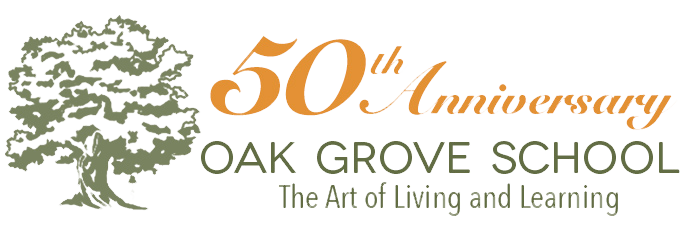OGS in the Press
An Ojai Valley News article about an art installation titled, Our Pandemic Story
Author: Perry Van Houten (Ojai Valley News)
Making sense of the pandemic and beginning to heal are the goals of a new large-scale collaborative art project installed over spring break at Oak Grove School in Meiners Oaks.
“Our Pandemic Story,” installed inside the school’s new Reflective Classroom, gives students, families and staff the opportunity to share their individual pandemic stories and to create a shared, community-wide story, according to Head of School Jodi Grass.
“It really felt critical to acknowledge where we are and what we are continuing to experience, and to offer an opportunity for healing for our community, for our parents and our students, and also for our staff and faculty,” Grass told the Ojai Valley News.
A phrase Grass heard a lot over the course of the past year from students, parents and staff was: “We’re so lucky here at Oak Grove.”
Oak Grove, which built outdoor classrooms at the onset of the lockdown, was one of the first two schools in Ventura County to be allowed to hold classes on campus instead of remotely. “We’ve been on campus almost the whole year, and our students have been on campus every day,” she said.
But what Grass wasn’t hearing was people talking about how they’ve suffered during the pandemic’s shared trauma and acknowledging what they’ve lost.
To truly become resilient after suffering a traumatic experience, Grass explained, one must first acknowledge the pain or the discomfort of the loss. “You can’t pick yourself up from scraping your knees and just say, ‘but I’m so lucky, I can walk,’ and not put Band-Aids on your knees. You first have to tend to the injury, or the emotional injury, to get to a place of resilience,” she said.
Grass said there’s a science of healing — a physiological response — involved in the process. “When you communicate and you speak or give voice, or call something out; when you say it out loud or write it down, it has a healing impact,” she said.
To that end, each Oak Grove family was asked to create patterns in the shapes of mandalas or snowflakes on multicolored construction paper, and write on the shapes what they lost and what they found during the pandemic.
On patterns in cool colors like purples, blues and greens, families were asked to describe what they lost. On one such mandala, a family wrote “Miss going to Libbey Park.”
On patterns in warm colors like red, orange and yellow, they were asked to de- scribe what they found. “We all hang out more” and “The dogs love having us home all the time,” read one mandala colored bright orange.
A third section of the installation features ribbon tied to a metal bed frame, on which families can acknowledge what they’re letting go — the things they can’t control.
Guiding the aesthetic vision of the project and leading the installation was artist Alison Frey Andersson.
The installation, which consists of approximately 400 individual pieces of art, is the first time the Reflective Classroom has been used since the pandemic hit.
Plans are to have the project in place through April and maybe longer. “And then, we’ll just see,” Grass said. “If families continue to want to contribute to it; if people are actively visiting it and going through it, we’ll keep it up and maybe keep adding to it until it feels completed.”
If there’s enough community interest, Oak Grove School could open the art installation to public viewing. “I can see a scenario where, if there was interest, that we could set something up where people can come on a Saturday or Sunday,” Grass said.
Providing a space for families to acknowledge what they’ve lost and what they’ve found during the pandemic has been powerful, Grass said, and plays a key role in the healing pro- cess. “I hope that it’s offered some healing, and also just a reminder of what it takes for us to heal as humans,” Grass said. “It really illuminates, I think, an emotional map for healing, for all kinds of situations in life.”


